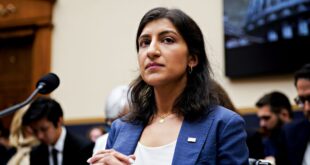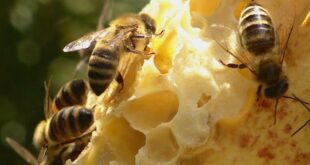
YouTube unleashed an influential generation of new internet celebrities in 2007 when it started to share ad revenue with select video creators. For the past couple of years, a snippet of code on YouTube’s website revealed which channels are part of the secretive and exclusive club. But users and activists who had come to rely on that flag suddenly found themselves in the dark last month.
YouTube removed the code, shutting off the ability of creators to keep tabs on their competitors—and of journalists and researchers to hold the world's largest video streaming service accountable for who it allows into what’s known as the YouTube Partner Program, or YPP. Its demise hasn’t been previously reported.
Being part of YPP can be a validation of creators' talents, but the uncertainty left by the code's removal could let both new joiners and kicked-out creators escape attention. In September, YouTube announced that UK comedian Russell Brand had been suspended from YPP after several women accused him of rape and sexual assault. Now, it’s more difficult to track a channel’s status.
Maen Hammad says he and his colleagues at the US corporate responsibility advocacy group Ekō used the code on YouTube channels and tools empowered by it to carry out their investigations. The nonprofit previously used the flag to report on anti-LGBTQ content receiving revenue from YouTube. “I would have to believe that YouTube took out the source code after many civil society groups were using them to corroborate that YouTube was monetizing some of the worst disinformation on the internet,” Hammad says.
Tony Woodall, who runs a travel channel that he hopes will soon meet the viewership requirements to join YPP, made use of YouTube’s transparency about accounts in the program in recent months. He used the Google Chrome extension Is YouTube Channel Monetized?, which was powered by the code snippet, to research and learn from the strategies of other travel accounts already in YPP. “YouTube creators like to know which other creators are getting monetized and ask, ‘Why not me?’” Woodall says. He now feels deflated—the extension has stopped working, and no clear alternatives are available.
Asked about the vanished code, YouTube spokesperson Kimberly Taylor says the service constantly makes updates to improve the privacy of creators and viewers. While ads appear on a variety of videos and channels, just those in YPP get a portion of sales. Whether someone is earning ad revenue share is a fact YouTube intends to keep private with the channel owner, Taylor says.
The sensitivity of that information is debatable. Lindz Amer, a transgender, nonbinary creator of kids’ content in YPP, says they never found it concerning for the public to know they received a share of ad revenue from YouTube. “People already assume my channel is monetized, because they see my subscriber count and they see ads,” says Amer, who has nearly 29,000 subscribers on YouTube. “I absolutely understand the importance of privacy but it’s not something that matters to me as much as my address not being online.”
YouTube, which is owned by Google, a subsidiary of Alphabet, pays up to 55 percent of ad revenue and a portion of subscription sales to more than 2 million creators who’ve met viewership and quality requirements to become part of YPP. After YouTube said it improved its ability to identify appropriate content, it began in November 2020 showing ads on non-YPP channels, from which it keeps 100 percent of the ad sales. But the ads expansion made it challenging for the public to authoritatively determine the creators included in the program and getting a revenue share.
Fortunately for watchdogs and wannabe members of YPP trying to monitor their competitors, internet archives show that in June 2021 the publicly accessible source code for YouTube channels’ homepages began including a piece of JavaScript including a flag showing “true” or “false” for “is_monetization_enabled.” By no later than December 2021, internet sleuths had spotted the helpful code. Software developers sprung into action, developing ad-supported websites and free browser add-ons that automatically looked for “true” or “false” in the code for a channel and displayed to users whether a particular channel was enrolled in YPP and thus receiving ad payouts.
At least one analytics tool used by millions of YouTube creators, vidIQ, integrated a monetization checker based on the code directly into its platform after users requested the feature. Chrome’s extension store shows a handful of such offerings collectively have more than 7,000 users.
The owner of the website Is This Channel Monetized, who goes by Alex Portman, says he developed his own tool in November 2022 because he works in digital marketing and needed to assess whether which YouTube channel strategies were commercially viable. “I figured I was not the only one needing this, so I turned it into an online tool,” Portman says. It’s been an unprofitable venture, but it’s generated significant traffic and paid off by benefitting his day job.
Portman and other developers say the code on YouTube channels disappeared as early as November 17—the day after WIRED asked YouTube about the flag when fact-checking a story about YouTube excluding creators in the Palestinian territories from its revenue-sharing arrangement. WIRED had used the code to confirm that Palestinian channels were not in YPP. YouTube did not dispute the accuracy of the code and generally does not publicly comment on a specific channel’s monetization status.
After YouTube removed the code, Portman says, his website experienced a surge in visits. He rushed to develop a way to use other clues to provide the same information.
His new system assumes a channel is in YPP if it meets the program minimum of 1,000 subscribers (though YouTube is gradually lowering the threshold to 500) and most of its recent videos have ads. Channels with other visible monetization features like memberships or Super Thanks are also considered part of YPP, since being in the program is a prerequisite but those options have not been widely adopted by channels. Portman has to start reporting some channel’s status as “unknown” when there aren’t enough clues to provide a clear answer.
“I haven't reached out to YouTube support, as they are generally not helpful at all,” Portman says. “I highly doubt they will ever address this.”
The advocacy group Ekō had used the monetization code and tools based on it to study financial support for problematic content on YouTube. The group published a report in October about seven channels apparently in YPP that accounted for 13 videos with what Ekō described as anti-LGBTQ speech. When following up last month, Ekō’s Hammad found that eight videos seemed to no longer show ads. Because the YPP-status-checking tools had broken, he could not determine whether the channels behind the uploads had been booted from YPP entirely. YouTube’s Taylor says ads don’t appear on videos violating YouTube guidelines, which include restrictions against hateful and derogatory content.
Media Matters for America, a nonprofit that calls out alleged misinformation spread by conservative commentators and the advertisers funding them, had taken advantage of the YPP-status-check functionality to inform its own work. “Rolling back transparency will negatively impact monetization research overall, not just at Media Matters,” spokesperson Laura Keiter says. “It's disappointing that we will need to look for new methods.”
WIRED couldn’t determine whether any academic researchers had relied on the code while studying online video. One professor speaking on the condition of anonymity to avoid retribution from YouTube says they had previously looked at the flag and that it would have been valuable to their future research. “Knowing which channels seek to monetize on YouTube and which don’t would be great for studying the online creator economy,” the professor says.
YouTube spokesperson Taylor says scholars are welcome to request data through a research program open to students and staff at higher-education institutions. That data does not include information on whether a channel is part of YPP or is receiving ad-revenue-sharing payments.
To ensure YPP creators are getting paid for their work, YouTube this year has forced millions of viewers to disable ad blockers if they want to watch videos without delays or at all, frustrating users and causing chaos in the ad-blocker developer community.
Within the community that emerged around the YPP code flag, the developer of an open source monetization-checker extension who goes by Shaz suspects that the popular vidIQ service distributing the functionality may have put the issue on YouTube’s radar and “put the final nail in the coffin.” VidIQ CEO Rob Sandie says YouTube changes the data it provides all the time. “That's their decision, and we respect that, and we'll continue to find more ways to help creators,” he says.
Shaz was quick to give up on his extension after the code’s disappearance. He pulled it from the Chrome store and archived his project on the code repository GitHub, closing it off to further updates. At least unless a new clue leaks someday.
*****
Credit belongs to : www.wired.com
 MaharlikaNews | Canada Leading Online Filipino Newspaper Portal The No. 1 most engaged information website for Filipino – Canadian in Canada. MaharlikaNews.com received almost a quarter a million visitors in 2020.
MaharlikaNews | Canada Leading Online Filipino Newspaper Portal The No. 1 most engaged information website for Filipino – Canadian in Canada. MaharlikaNews.com received almost a quarter a million visitors in 2020.







